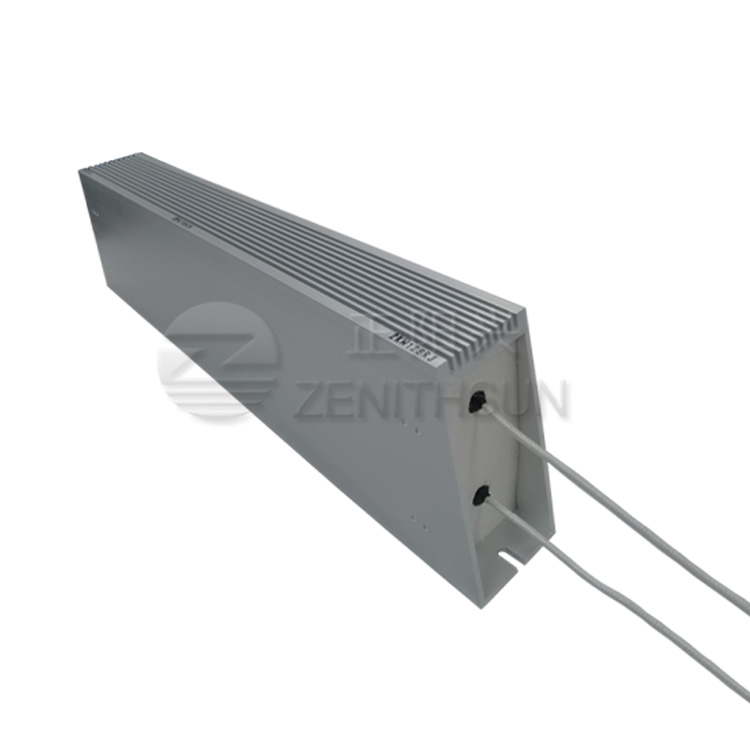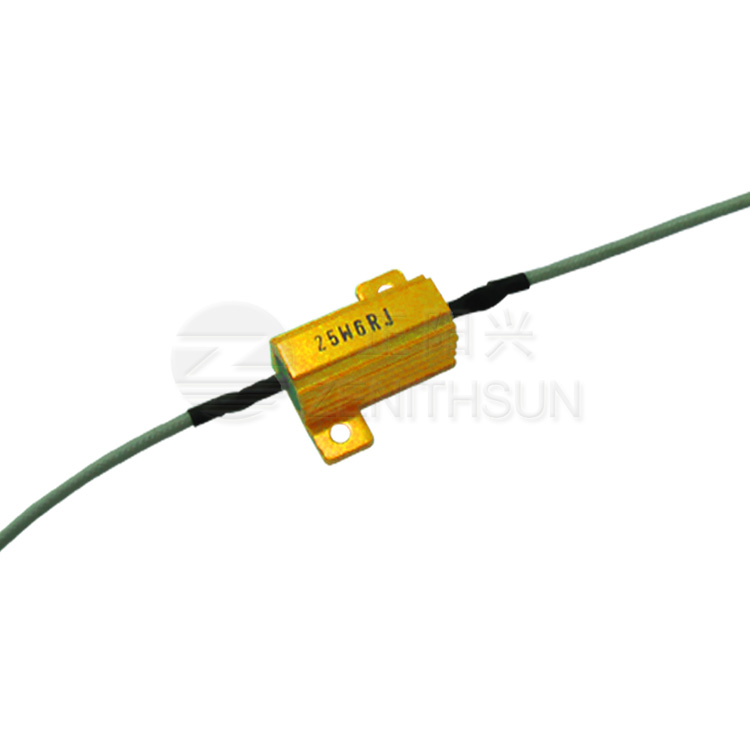We use cookies to enhance your experience. By continuing to browse this site you agree to our use of cookies. More info.
Image Credits: Igor Iakovlev/shutterstock.com Carbon Resistors

Resistors are a type of electrical component which are widely used in electrical circuits. In fact, they are one of the most widely used and most important components of an electrical circuit. In short, resistors implement an electrical resistance into the electrical circuit by restricting the amount of current that can flow through it. Resistors are often governed by either precision or power; and the choice of which one is implemented into an electrical circuit is dependent upon the tolerance of the resistor and the electrical properties of the circuit. As far as the structure of resistors go, the two most common types either employ thick film materials or thin film materials. In this article, we look at the latter.
Thin film resistors are a type of resistor that possess a thin resistive layer sat on top of a ceramic base. The principle difference between thick and thin film resistors is the thickness of this resistive layer, with thin films possessing a thickness of around 0.1 microns. By comparison, thick film resistors can be up to 1000 times thicker (usually around 100 microns). Whilst this is the main categorical difference, the vast differences in the thickness also cause thick and thin film resistors to have different properties and different fabrication methods. As a rule of thumb, thin film resistors are usually more accurate, precise, and stable, which enable them to be used in higher precision technologies. However, this does make them more expensive than their thick film counterparts.
One of the key differences between a thin and thick film resistor is in the fabrication process. To create a thin film resistor, a dense, uniform metallic alloy layer is deposited onto the ceramic base under a vacuum (other less-frequently used base materials can include silicon or glass). This metallic layer acts as the resistive layer. The metal alloy is usually composed of chromium and nickel, with nichrome being the most common choice.
As fair as deposition techniques go, there are two that are used. The first is thermal deposition under a ‘hard’ (conventional) vacuum, and the second is through physical vapour deposition (PVD) using a ‘softer’ vacuum, i.e. a vacuum that is backfilled with argon to increase the pressure. Of these, PVD techniques are more widely used, and sputtering is often the PVD method of choice for many manufacturers.
After the metallic layer is deposited, it is usually patterned using photolithography and subtractive processes. The subtractive process is often used to trim the resistance value as per the intended application. The etched patterns also help to increase the resistive path within the metallic layer and can help with calibrating the resistance value of the resistor. As per any resistor manufacturing process, a protective coating, base contacts and termination sections are also incorporated into the resistor.
Aside from their obvious difference in thickness, there are some key differences between thin and thick film resistors. Whilst they have a similar external appearance, they are made using different fabrication processes, with thick films often being manufactured using screen and stencil printing approaches. The different fabrication process also yields a difference in the materials used; as mentioned, thin film resistors often use a uniform metallic film such as nichrome as the resistive layer, whereas thick film resistors are made up a paste composed of either ruthenium oxide or a platinum-based alloy.
As far as the properties of the resistors go, there are differences. Thin film resistors have lower resistance values and a narrower tolerance range, whereas thick film resistors are more versatile over a wider resistance range. Thin film resistors can also operate in a wider voltage range (and up to higher voltages) and possess a lower current noise than thick film resistors. Thin film resistors also possess a lower parasitic inductance and capacitance, but this can be negated in some thick film resistors depending on the geometry of the resistive material.
However, the one area that thin films have a significant disadvantage against thick film resistors is in their resistance to moisture – thick film resistors have a glassy-type structure which makes them more resistant to moisture. Even though the cost of thin film resistors is greater than their thick film counterparts, advances in mass manufacturing methods have brought the price of these units down in recent years.
Thin film resistors often have fewer applications than their thick film counterparts. However, thin film resistors are usually used for applications where a higher precision is required, such as for measuring and monitoring equipment within the medical and aerospace sectors, audio applications, computer chips, power supply converters, telecommunications, radiofrequency (RF) applications, HVAC systems and precision control applications.
Disclaimer: The views expressed here are those of the author expressed in their private capacity and do not necessarily represent the views of AZoM.com Limited T/A AZoNetwork the owner and operator of this website. This disclaimer forms part of the Terms and conditions of use of this website.
Liam Critchley is a writer and journalist who specializes in Chemistry and Nanotechnology, with a MChem in Chemistry and Nanotechnology and M.Sc. Research in Chemical Engineering.
Please use one of the following formats to cite this article in your essay, paper or report:
Critchley, Liam. (2019, October 25). A Guide to Thin Film Resistors. AZoM. Retrieved on December 18, 2023 from https://www.azom.com/article.aspx?ArticleID=16722.
Critchley, Liam."A Guide to Thin Film Resistors".AZoM.18 December 2023.
Critchley, Liam. "A Guide to Thin Film Resistors". AZoM. https://www.azom.com/article.aspx?ArticleID=16722. (accessed December 18, 2023).
Critchley, Liam. 2019. A Guide to Thin Film Resistors. AZoM, viewed 18 December 2023, https://www.azom.com/article.aspx?ArticleID=16722.
Do you have a review, update or anything you would like to add to this article?
In this interview, AZoM speaks to Bruker Optics about the different ways IR light can be used in semiconductors.
At The Greener Manufacturing Show 2023, we spoke with KUORI CEO and Founder Sarah Harbarth about the growth and ambitions of the company as it develops its novel materials.
In this interview, AZoM talks to Geoff Downing and Mark Mattison from Thermo Fisher Scientific and Entegris, respectively, about semiconductors and their importance, manufacture and how gas analysis factors into these processes.
Specac’s Power Hydraulic Press Series are available in 8 Ton, 15 Ton and 25 Ton load configurations.
The SamplerSight Pharma from PMS is an easy-to-use software for batch sampling.
Allectra's latest bimetallic CF component series, featuring innovative Titanium CF Flanges linked with Aluminum Tubes, promises to revolutionize the design of Aluminum chambers.
The global semiconductor market has entered an exciting period. Demand for chip technology is both driving the industry as well as hindering it, with current chip shortages predicted to last for some time. Current trends will likely shape the future of the industry, which is set to continue to show
The primary distinction between graphene-based batteries and solid-state batteries lies in the composition of either electrode. Although the cathode is commonly changed, carbon allotropes can also be employed in fabricating anodes.
In recent years, the IoT is rapidly being introduced into almost all sectors, but it has particular importance in the EV industry.
AZoM.com - An AZoNetwork Site

Cermet Film Resistor Owned and operated by AZoNetwork, © 2000-2023